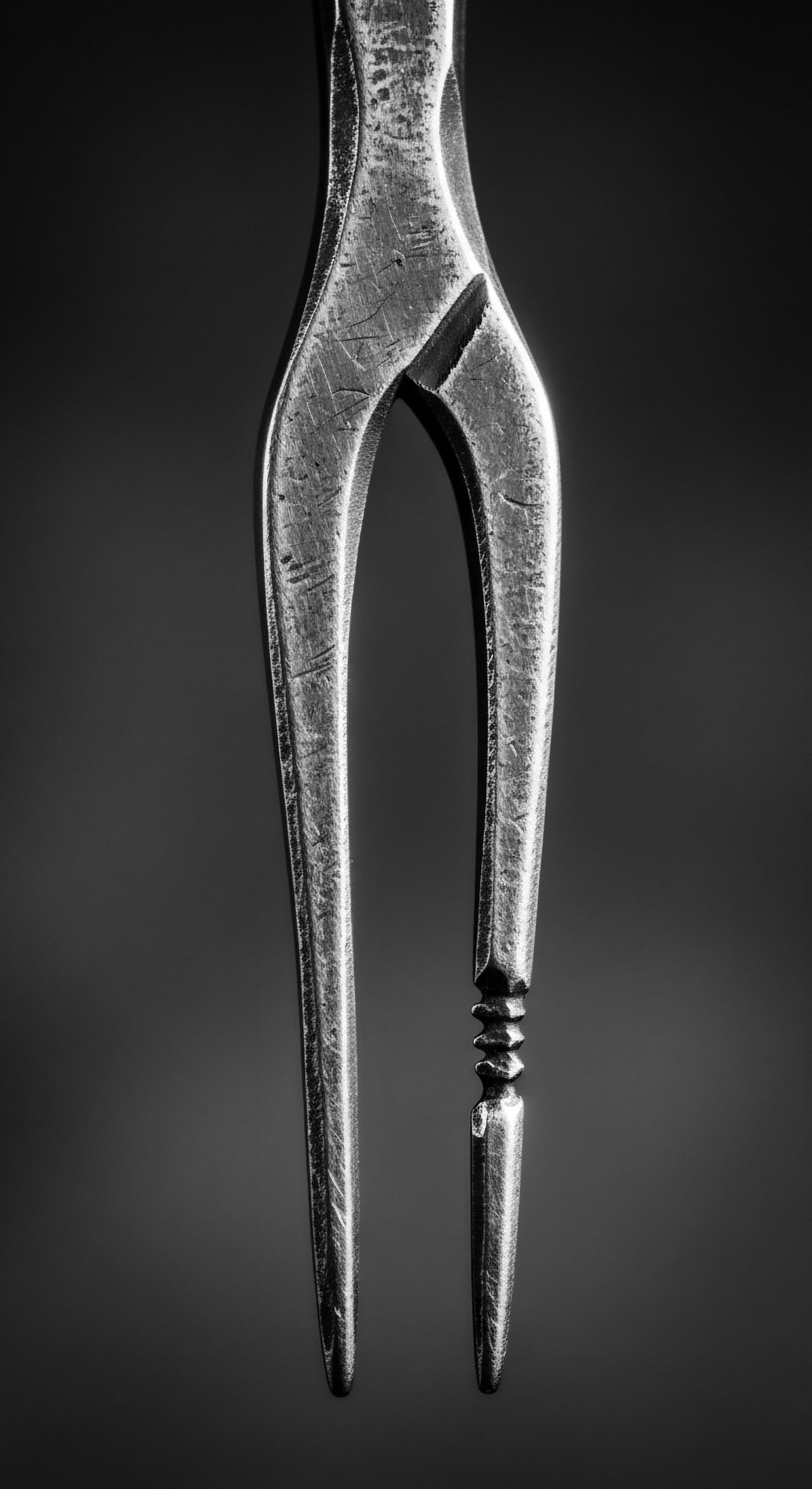
Fundamentals
The journey into understanding Alopecia, a term denoting hair loss from the head or body, begins with a gentle recognition of its varied manifestations. For those new to this path, Alopecia stands as a broad designation for conditions causing either temporary or permanent hair diminution, affecting individuals across all walks of life, regardless of their hair’s innate curl or straightness. A fundamental comprehension reveals that hair, a living extension of our being, arises from follicles nestled beneath the scalp’s surface.
When the delicate balance within these follicles is disturbed, whether through internal biological shifts or external pressures, the rhythm of hair growth can falter, leading to the various patterns of loss we observe. This initial understanding serves as a gateway to appreciating the deeper significance of hair health, particularly within communities where hair carries stories, resilience, and profound cultural memory.
Across diverse human experiences, the phenomenon of hair loss can present as subtle thinning, noticeable patches, or even a more widespread reduction in density. The physical attributes of hair, such as its thickness, texture, and growth cycle, play a part in how these changes appear and how they are perceived within a community. While the visible effects of Alopecia are often a primary concern, the unseen shifts at the follicular level dictate the long-term prospects for hair’s return or its lasting absence. The exploration of this condition, at its simplest, calls for an attentiveness to the body’s subtle messages, prompting us to look beyond the surface of a strand to its very source.
Alopecia, in its most straightforward sense, describes the cessation of hair growth, manifesting in diverse ways from minor thinning to significant baldness.
For textured hair, the expression of Alopecia often carries unique considerations due to the singular helical structure of its follicles and the ancestral styling practices passed down through generations. These hair strands, with their intrinsic curl and coil, possess a delicate architecture that responds distinctly to certain stimuli. An introductory glance shows that some forms of Alopecia might be more readily recognized within textured hair populations, not because of inherent weakness, but often as a complex interplay of genetic predispositions and the cumulative effects of historical styling choices. It is a dialogue between elemental biology and the lived experiences etched into the very fabric of communal hair traditions.
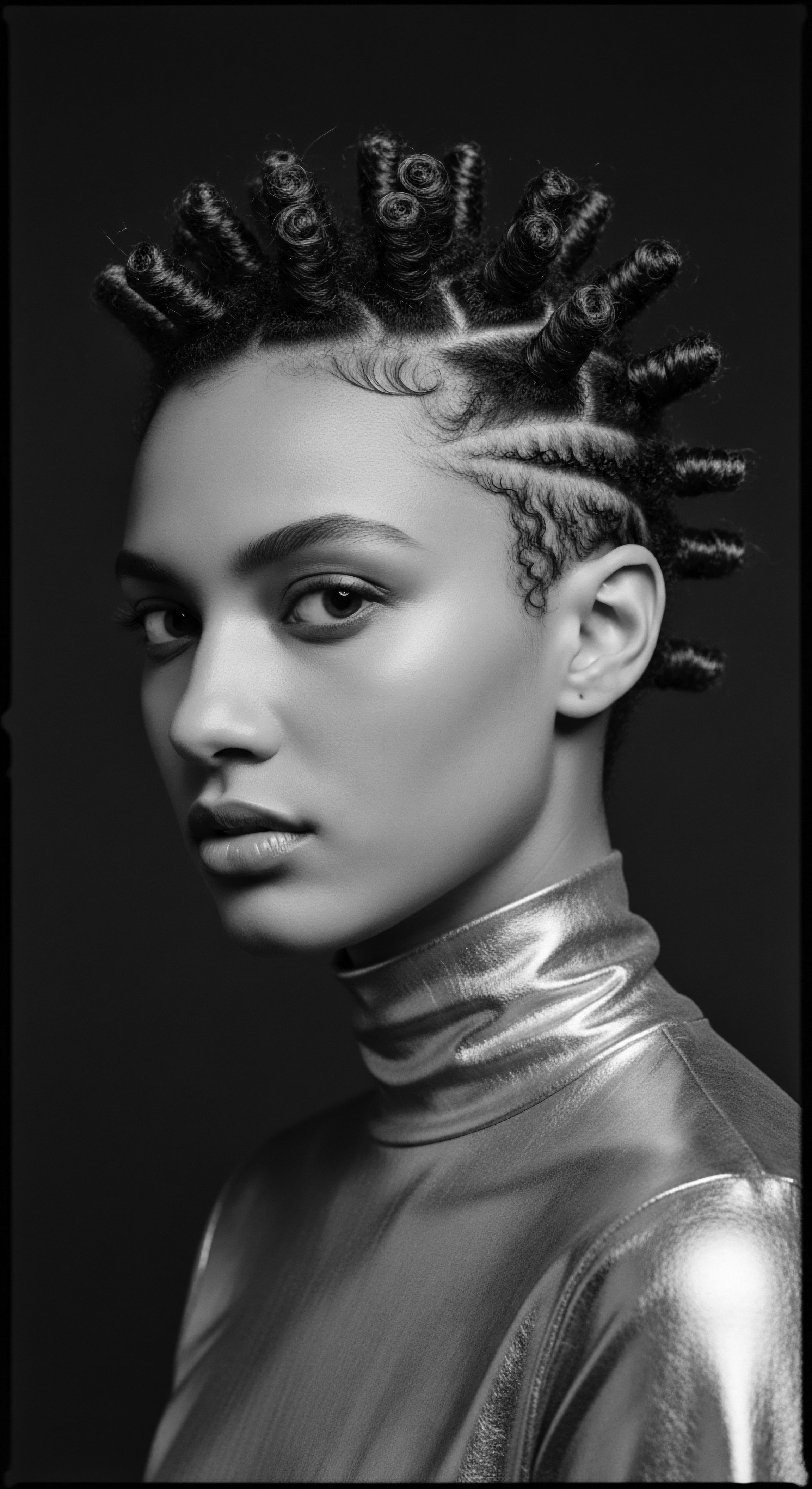
Early Observations and Shared Vulnerabilities
Historically, communities observed hair loss without the lexicon of modern science, attributing changes to diet, spiritual balance, or the tolls of labor. Though the scientific understanding of hair biology was nascent, the wisdom of communal observation often guided responses to perceived shifts in hair vitality. This ancestral wisdom, frequently grounded in practices that nourished the scalp and revered hair as a vital component of identity, held intuitive truths about care.
For instance, even in ancient times, certain forms of hair loss, perhaps akin to what we now identify as a consequence of tension, might have been noted among those who adorned their hair with tight braids or intricate styles that marked social standing or marital status. While the precise designation of conditions like Traction Alopecia awaited scientific classification, the recognition of hair thinning along the hairline due to persistent strain was a lived reality. Such observations, passed down through oral traditions, formed an early, though unscientific, understanding of hair’s fragility under duress.
This initial overview of Alopecia establishes a foundational understanding, setting the stage for a deeper exploration into its complexities, particularly as they intertwine with the rich legacy of textured hair and the communities that celebrate it.
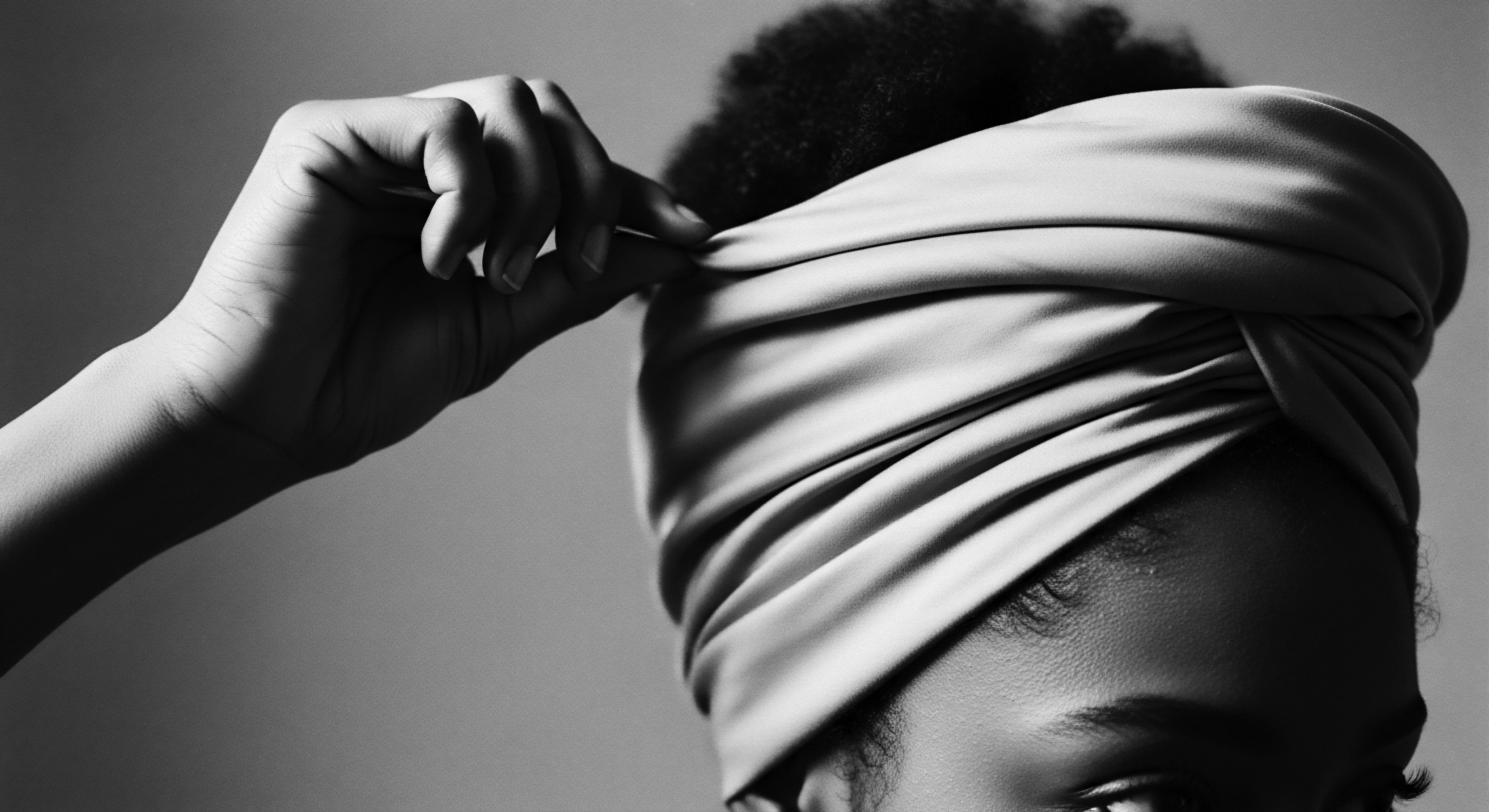
Intermediate
Moving beyond a simple recognition, an intermediate appreciation of Alopecia reveals it as a constellation of conditions, each with its own underlying mechanisms and expressions. This deeper understanding necessitates a closer examination of the hair follicle itself, that intricate mini-organ nestled within the skin, the wellspring of each strand. The life of a hair strand unfolds in a cyclical pattern ❉ an active growth phase (anagen), a transitional phase (catagen), and a resting phase (telogen), before a new hair emerges. Alopecia, in its varied forms, disrupts this natural rhythm, leading to a reduced number of growing hairs or the shedding of those already formed.
For Black and mixed-race hair experiences, this intermediate insight becomes particularly salient. The unique helical shape of the textured hair follicle, while contributing to its magnificent curl and coil, also presents distinct considerations for how it responds to environmental and mechanical stressors. This inherent structural quality means that certain hair care practices, when not mindfully applied, can place undue stress on the hair shaft and its delicate follicle, leading to specific types of hair loss that are disproportionately observed within these communities.
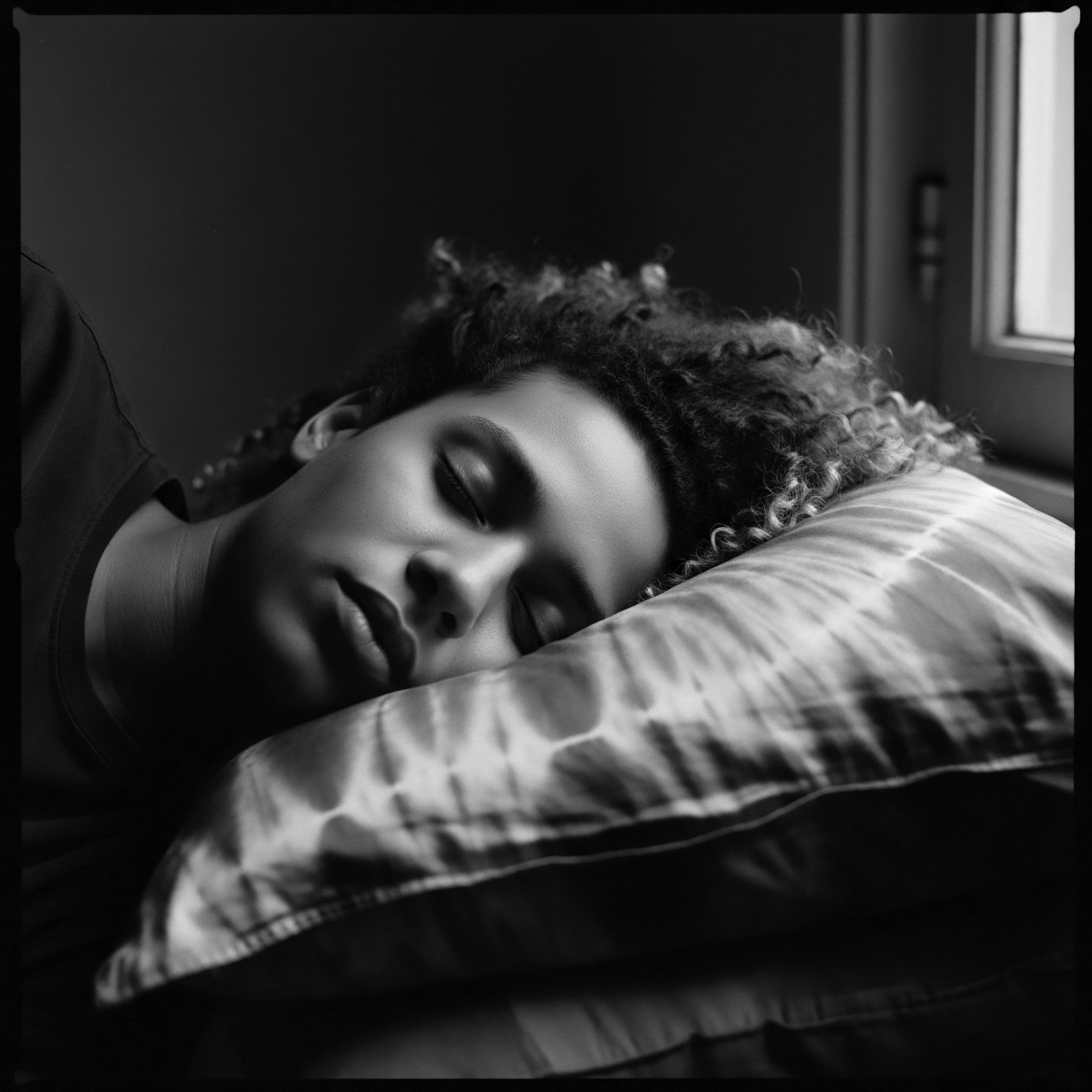
Common Expressions of Alopecia in Textured Hair
Among the spectrum of Alopecia conditions, two stand out for their prevalence and direct relationship to hair care practices within textured hair communities ❉ Traction Alopecia (TA) and Central Centrifugal Cicatricial Alopecia (CCCA).
- Traction Alopecia ❉ This condition arises from prolonged or repetitive tension on the hair follicles, leading to inflammation and, over time, irreversible scarring. Imagine a thread constantly pulled at its anchor; eventually, the anchor itself weakens. This mechanical stress can result from hairstyles that exert significant tension, such as very tight braids, cornrows, weaves, ponytails, or extensions. The hair loss typically appears along the hairline, temples, or where the most strain is applied.
- Central Centrifugal Cicatricial Alopecia (CCCA) ❉ Often described as a scarring alopecia, CCCA begins at the crown of the head and spreads outward, characterized by the destruction of hair follicles and their replacement with scar tissue. Though its exact cause is complex, involving genetic predispositions, CCCA is frequently associated with a history of practices that cause inflammation or micro-trauma to the scalp, such as chemical relaxers and excessive heat styling. The historical link to “hot comb alopecia” (originally described in 1968) speaks to the deep heritage of this particular challenge within Black communities.
Other forms, like Alopecia Areata, an autoimmune condition causing patchy hair loss, or Androgenetic Alopecia, a genetic predisposition to thinning, also affect textured hair, though their prevalence may differ or their presentation might be influenced by hair structure. Understanding these distinctions is paramount to discerning appropriate care pathways.
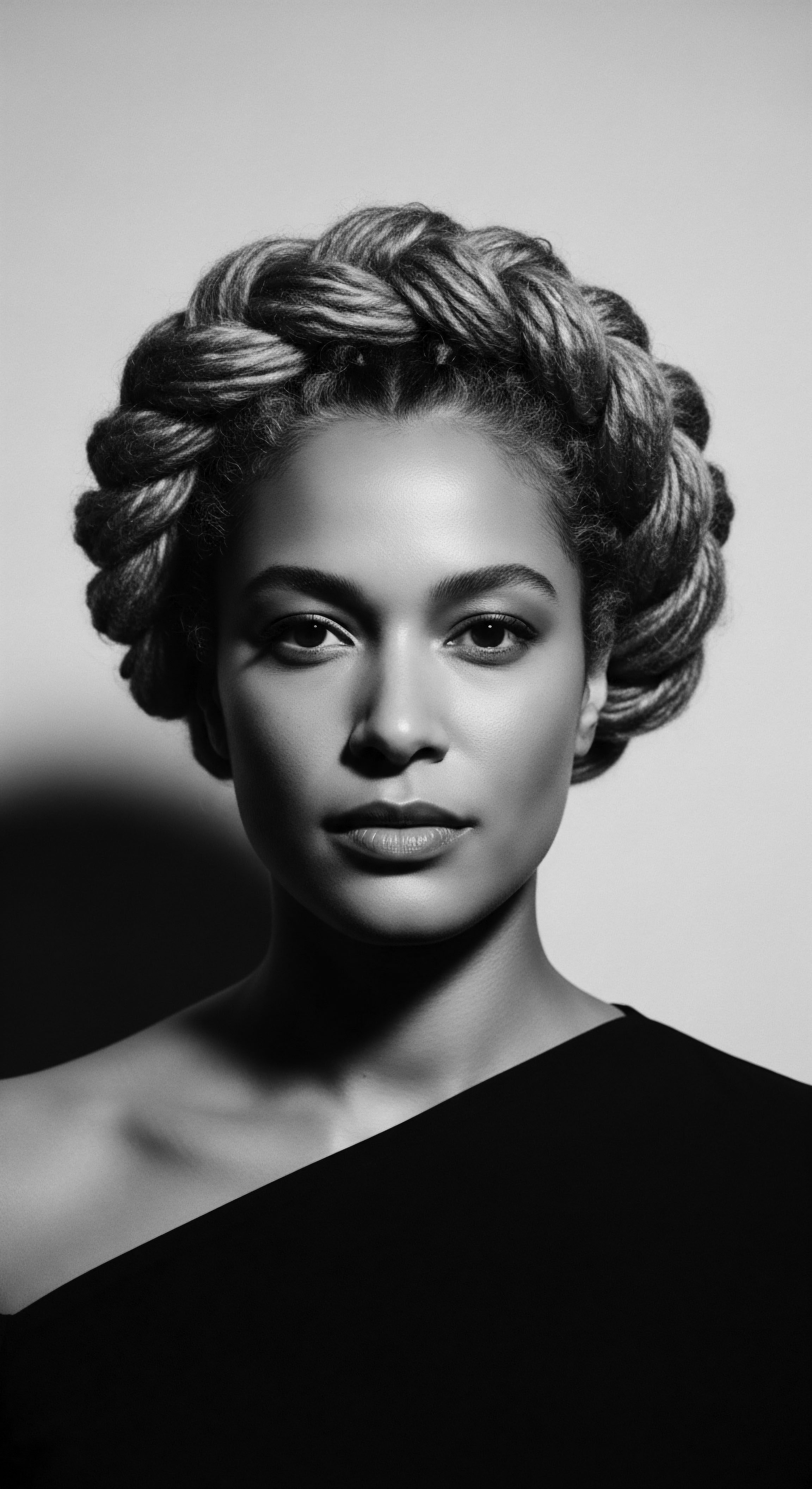
The Legacy of Care and Adaptation
The conversation around Alopecia for textured hair extends beyond clinical definitions, reaching into the deep pools of cultural history and adaptation. For centuries, ancestral practices in various African communities centered on nurturing scalp health and preserving the integrity of hair. These traditions often involved ❉
- Nourishing Botanicals ❉ The diligent application of plant-derived oils and butters, such as Shea Butter, Coconut Oil, and Argan Oil, for their conditioning and protective qualities. These substances, often extracted through meticulous, hands-on processes, were not simply for aesthetic appeal but for promoting the scalp’s vitality and the hair’s resilience.
- Mindful Cleansing Rituals ❉ Practices like using natural clays such as Rhassoul Clay or African Black Soap, recognized for their gentle cleansing and balancing properties, which respected the hair’s natural moisture balance. This stood in contrast to harsh detergents that strip essential oils, a common concern in modern hair care.
- Protective Styling ❉ Intricate braiding, coiling, and twisting styles served not only as expressions of identity and social status in pre-colonial Africa but also protected the hair from environmental elements and mechanical damage. These styles were often crafted with care, avoiding excessive tension, and regularly refreshed to allow for scalp access and breathability.
The introduction of Eurocentric beauty standards during and after enslavement shifted many of these practices. The pressure to conform to a straightened aesthetic for acceptance and economic mobility led to the widespread adoption of chemical relaxers and hot styling tools. While these methods provided a means of navigating oppressive social landscapes, they often came at a cost to hair health, contributing to conditions like CCCA and exacerbating the risk of traction alopecia. This historical arc informs the complexities of hair care choices and their potential impact on hair loss within Black and mixed-race communities.
The historical adoption of certain styling practices, driven by societal pressures, introduced unforeseen vulnerabilities to textured hair, underscoring the deep interplay between culture and scalp health.
Therefore, an intermediate understanding of Alopecia in textured hair asks us to consider not only the biological intricacies of hair growth but also the profound cultural and historical forces that have shaped hair care practices and, by extension, the susceptibility to specific forms of hair loss. It invites a compassionate and informed lens, appreciating the multifaceted journey of hair through time and tradition.

Academic
Alopecia, in its academic scope, designates a pathological deviation from the expected physiological cycle of hair growth, resulting in partial or complete hair loss from the scalp or other body areas. This comprehensive meaning encompasses a spectrum of dermatological conditions characterized by follicular miniaturization, inflammatory responses that compromise the hair follicle, or destructive processes leading to scarring and irreversible follicular unit loss. A meticulous interpretation of Alopecia therefore requires a multidisciplinary lens, integrating insights from dermatology, genetics, immunology, and socio-cultural anthropology, particularly when examining its manifestations within populations of African descent.
The intrinsic structural characteristics of Afro-textured hair, specifically its elliptical cross-section and the unique curvature of its follicles, render it particularly susceptible to mechanical stress and certain chemical alterations. This inherent morphology, which yields the hair’s coiled and kinky patterns, also means that the hair shaft may possess fewer points of contact along its length, potentially leading to increased susceptibility to breakage and reduced lubricity from natural scalp oils. This fundamental biological predisposition is further compounded by a complex historical and socio-cultural narrative that has profoundly influenced hair care practices among Black and mixed-race individuals.
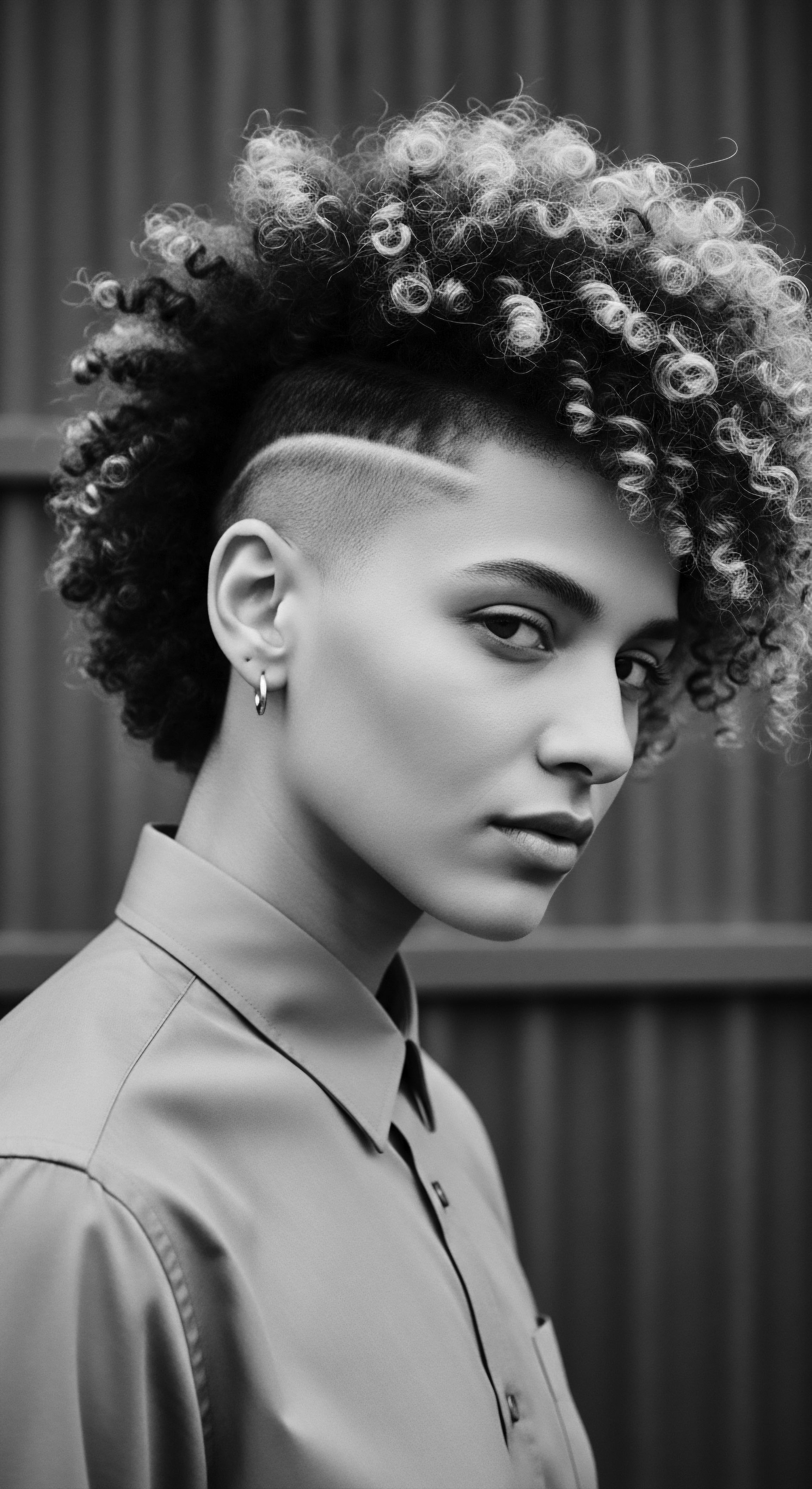
Echoes from the Source ❉ Alopecia and Ancestral Practices
Ancestral hair practices in pre-colonial African societies were deeply interwoven with spiritual, social, and economic life. Hair was not merely an appendage; it served as a visual lexicon, communicating tribal affiliation, marital status, age, wealth, and even spiritual connections. These intricate styles, often taking hours or days to craft, were meticulously maintained through rituals involving natural oils, plant-based cleansers, and communal grooming sessions. This period often favored styles that respected the hair’s natural architecture, utilizing braiding, twisting, and coiling methods that, when properly executed, offered protection from environmental aggressors.
Consider the profound significance of Chebe Powder, a traditional Chadian hair care regimen, which for generations has been employed to strengthen hair, promote moisture retention, and maintain scalp health. This finely ground blend of herbs, when applied as a paste, coats the hair shaft, reducing breakage and thereby contributing to length preservation. Such ancestral practices, developed through centuries of empirical observation, implicitly understood the importance of protecting the hair’s integrity from its roots to its ends, often mitigating forms of hair loss that might arise from environmental factors or daily wear. The meticulousness of these customs, such as careful detangling with wide-toothed combs, speaks to a deep, embodied knowledge of textured hair’s specific needs.
The forced displacement and enslavement of African peoples brought about a dramatic rupture in these heritage-rich hair traditions. Stripped of their tools, ingredients, and communal grooming spaces, enslaved individuals were often compelled to abandon their complex hairstyles, sometimes resorting to drastic measures to manage their hair under brutal conditions. The imposition of Eurocentric beauty standards further cemented a paradigm where straightened hair became synonymous with acceptability, professionalism, and even survival in a discriminatory society. This cultural pressure led to the widespread adoption of chemical relaxers and hot combs, tools designed to alter the hair’s natural structure.
It is at this juncture that the historical thread of hair styling intersects directly with the prevalence of certain forms of Alopecia in the Black community. For instance, Traction Alopecia (TA), a non-scarring alopecia in its early stages but potentially irreversible with chronic tension, is a particularly pertinent example. It arises from persistent mechanical stress on the hair follicle, leading to inflammation and eventual follicular destruction. This condition is disproportionately observed among women of African descent.
A compelling statistic highlights this connection ❉ Traction Alopecia Affects One-Third of Women of African Descent Who Regularly Employ Traumatic Hairstyling Practices for Extended Durations (Billero & Miteva, 2018, P. 149). This significant prevalence is a direct consequence of socio-historical factors that favored tight styling, such as braids, weaves, and extensions, often employed to achieve straightened appearances or for perceived ease of management. The continuous pulling stresses the follicular unit, leading to inflammation, hair shaft fracture, and ultimately, permanent scarring of the follicle if the tension is not alleviated.
The historical push towards Eurocentric hair aesthetics, often through methods that stressed textured hair, significantly amplified the prevalence of specific Alopecia types within Black communities.
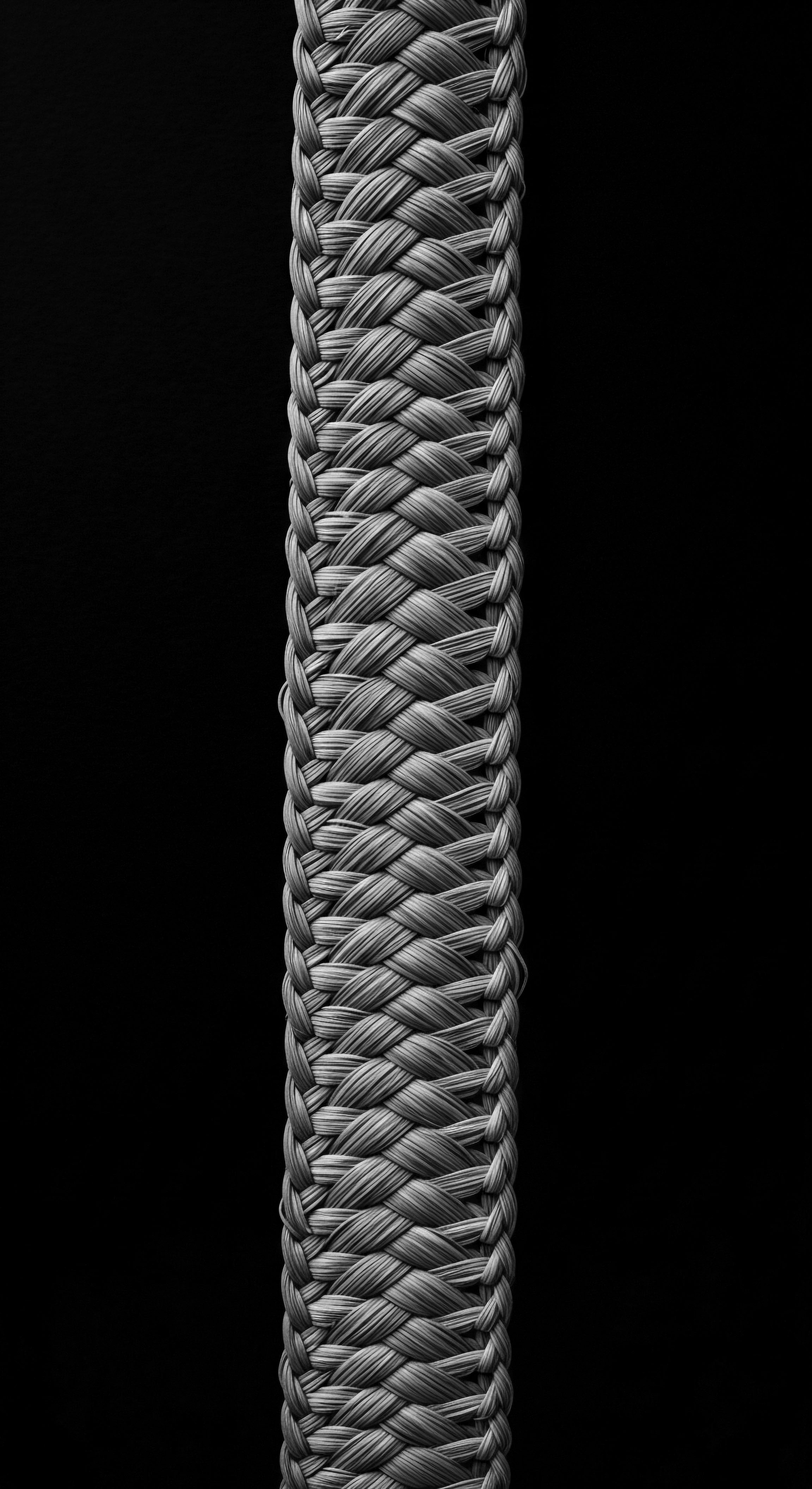
The Tender Thread ❉ Living Traditions and Modern Realities
The understanding of Alopecia within textured hair experiences extends to the contemporary echoes of these historical pressures. While the natural hair movement has empowered many to embrace their inherent texture, the legacy of past styling practices continues to shape hair health challenges.
Central Centrifugal Cicatricial Alopecia (CCCA), another scarring alopecia, disproportionately impacts Black women, starting at the crown and spreading outwards. While the precise etiology of CCCA involves a complex interplay of genetic susceptibility and inflammatory processes, its association with chemical relaxers and heat styling is well-documented. These chemical agents and high temperatures can compromise the integrity of the hair shaft and scalp, creating an environment conducive to chronic inflammation that eventually destroys the hair follicle. The shift from lye-based relaxers to “no-lye” formulations, while marketed as gentler, still involves chemical processes that can cause follicular damage over time.
The emotional and psychological toll of Alopecia within the Black community is profound. Hair is often referred to as a “crown” and is intimately linked to identity, femininity, and self-worth. The experience of hair loss can lead to significant psychological distress, including anxiety, depression, and a sense of cultural disconnection, particularly when common hairstyles within the community are no longer achievable. This impact underscores the necessity for culturally competent care that acknowledges the deep, personal connection individuals have with their hair history and appearance.
| Ancestral Practice / Ingredient Chebe Powder (Chadian Blend) |
| Traditional Application & Significance Ground herbs applied as a paste to coat hair, reducing breakage and aiding length retention; signifies a heritage of hair cultivation. |
| Modern Scientific Link / Potential Benefit for Alopecia Its ability to reduce hair shaft breakage can mitigate forms of hair loss akin to trichorrhexis nodosa, and improve overall hair density, indirectly supporting length retention. |
| Ancestral Practice / Ingredient Shea Butter / Natural Oils (e.g. Coconut, Argan) |
| Traditional Application & Significance Massaged into scalp and hair for moisture, protection, and softness; central to daily care rituals. |
| Modern Scientific Link / Potential Benefit for Alopecia These natural emollients provide moisture and create a barrier against environmental stressors, potentially reducing dryness and brittleness that can contribute to hair shaft breakage. Certain oils possess anti-inflammatory properties that may support scalp health. |
| Ancestral Practice / Ingredient Scalp Massage |
| Traditional Application & Significance Promoted circulation and encouraged hair growth; a shared, bonding ritual within families. |
| Modern Scientific Link / Potential Benefit for Alopecia Enhances blood flow to the scalp, which nourishes hair follicles, potentially supporting the anagen phase of hair growth. This practice aligns with contemporary dermatological recommendations for improved scalp microcirculation. |
| Ancestral Practice / Ingredient Understanding these historical connections provides a holistic pathway towards contemporary hair wellness, bridging ancestral wisdom with scientific validation for addressing Alopecia and nurturing textured hair. |
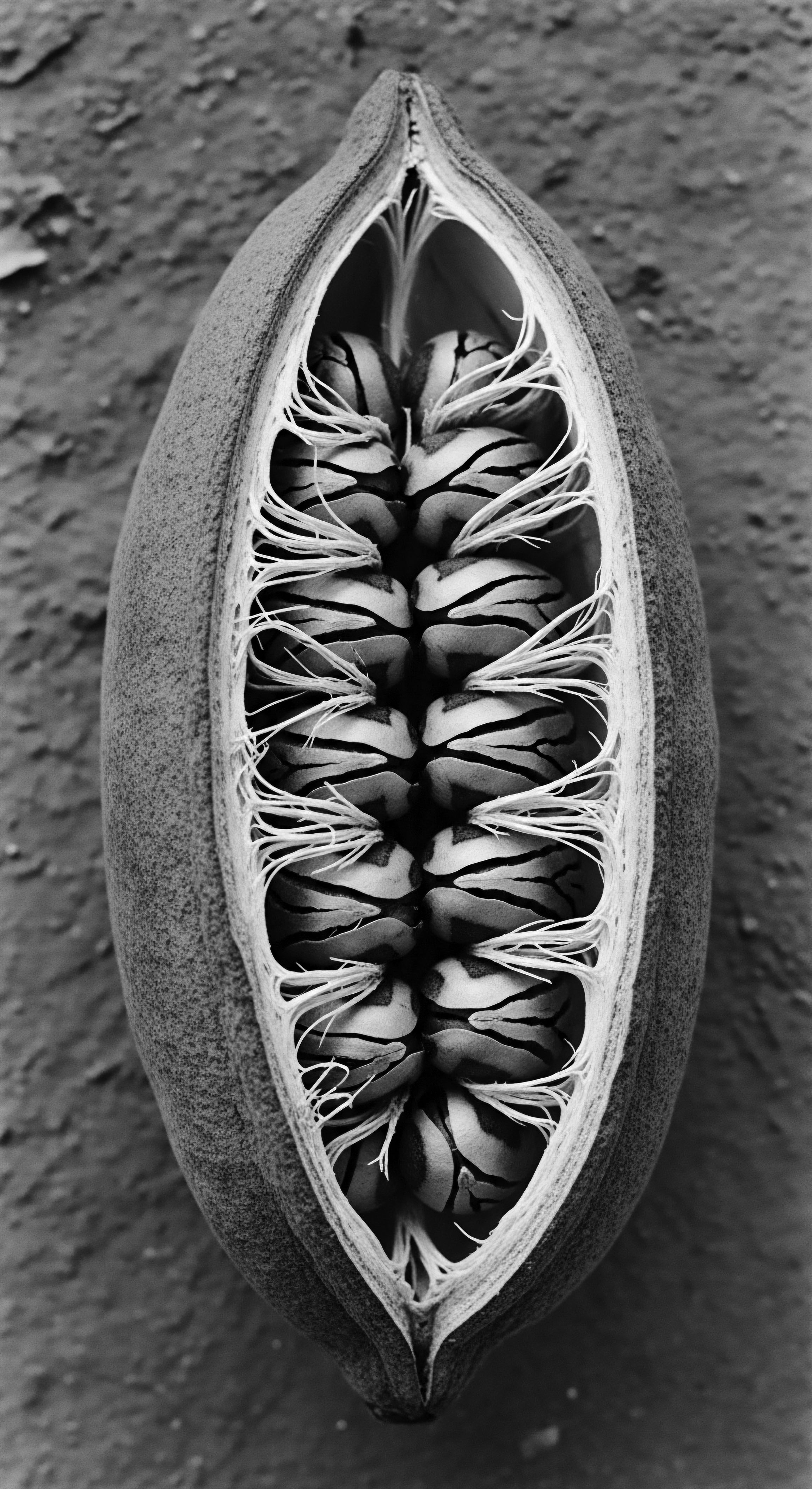
The Unbound Helix ❉ Voicing Identity and Shaping Futures
The discourse surrounding Alopecia in textured hair is increasingly acknowledging the intricate links between hair health, cultural identity, and social justice. The movement for hair freedom, epitomized by legislation like the CROWN Act, aims to dismantle discriminatory practices based on hair texture and protective styles. This legal and social shift allows individuals to embrace their natural hair without fear of professional or academic repercussions, thereby reducing the pressure to adopt styling methods that might predispose them to forms of Alopecia like TA or CCCA. When societal standards shift to value all hair textures, it allows for healthier styling choices that respect the hair’s natural state.
From an academic viewpoint, the focus is expanding to include culturally sensitive patient education and research that specifically addresses the unique needs of textured hair. Dermatologists are increasingly urged to understand the history and cultural significance of Black hair care practices to provide more effective and empathetic care. This involves recommending protective styles that do not exert undue tension, advocating for breaks from styles that pull at the roots, and educating on the risks associated with chemical relaxers and excessive heat.
Research into the genomics of textured hair is also gaining momentum, seeking to decipher the specific genetic variations that influence hair type, growth patterns, and susceptibility to certain conditions. A deeper understanding of these genetic underpinnings, combined with insights from traditional practices, promises to revolutionize personalized hair care solutions, offering more targeted and effective interventions for Alopecia. This interdisciplinary approach, drawing from both the deep well of ancestral knowledge and the cutting edge of scientific inquiry, offers a more comprehensive and compassionate framework for navigating the complexities of Alopecia in textured hair. It signals a future where hair health is not merely a medical concern, but a celebrated aspect of cultural heritage and individual autonomy.
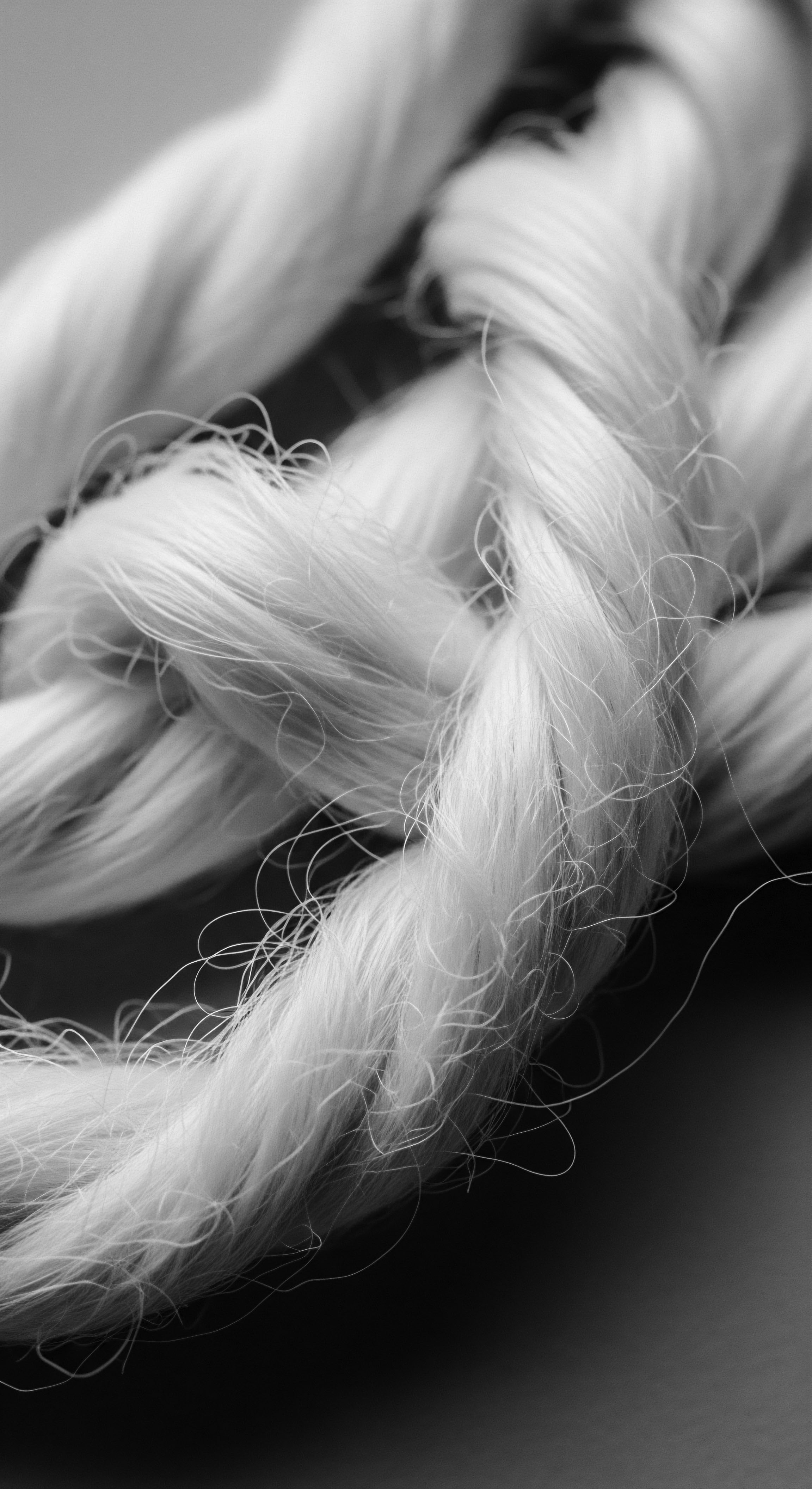
Reflection on the Heritage of Alopecia
The journey through Alopecia, viewed through the lens of textured hair heritage, is a profound meditation on resilience, adaptation, and the enduring connection between self and ancestry. Hair, for Black and mixed-race communities, has always transcended simple aesthetics, serving as a powerful archive of identity, resistance, and collective memory. When we speak of Alopecia in this context, we speak not only of a biological phenomenon but of a rupture in a cherished lineage, a challenge to a deeply rooted cultural expression.
The historical imposition of beauty standards, often necessitating practices that compromised hair health, casts a long shadow over the modern experience of Alopecia. Yet, within this shadow, a vibrant spirit of ingenuity and self-preservation persists. The ancestral wisdom, whispered through generations of meticulous hands and time-honored rituals, offers a guiding light. From the protective embrace of traditional braiding techniques to the nourishing touch of earth-derived botanicals, these practices speak to an innate understanding of hair’s delicate nature and its need for thoughtful care.
Today, as scientific understanding validates many of these ancient truths, we stand at a unique convergence. The dialogue between contemporary dermatology and historical hair traditions is not merely an academic exercise; it is an act of reclamation, a conscious effort to restore balance and harmony. Understanding Alopecia for textured hair means honoring the historical narrative of hair, recognizing the sacrifices made in pursuit of acceptance, and championing a future where every strand can flourish, unbound by societal pressures and nourished by the deep well of inherited wisdom. It is a testament to the enduring spirit of communities who, despite historical adversities, continue to find beauty, strength, and voice in their crowning glory.
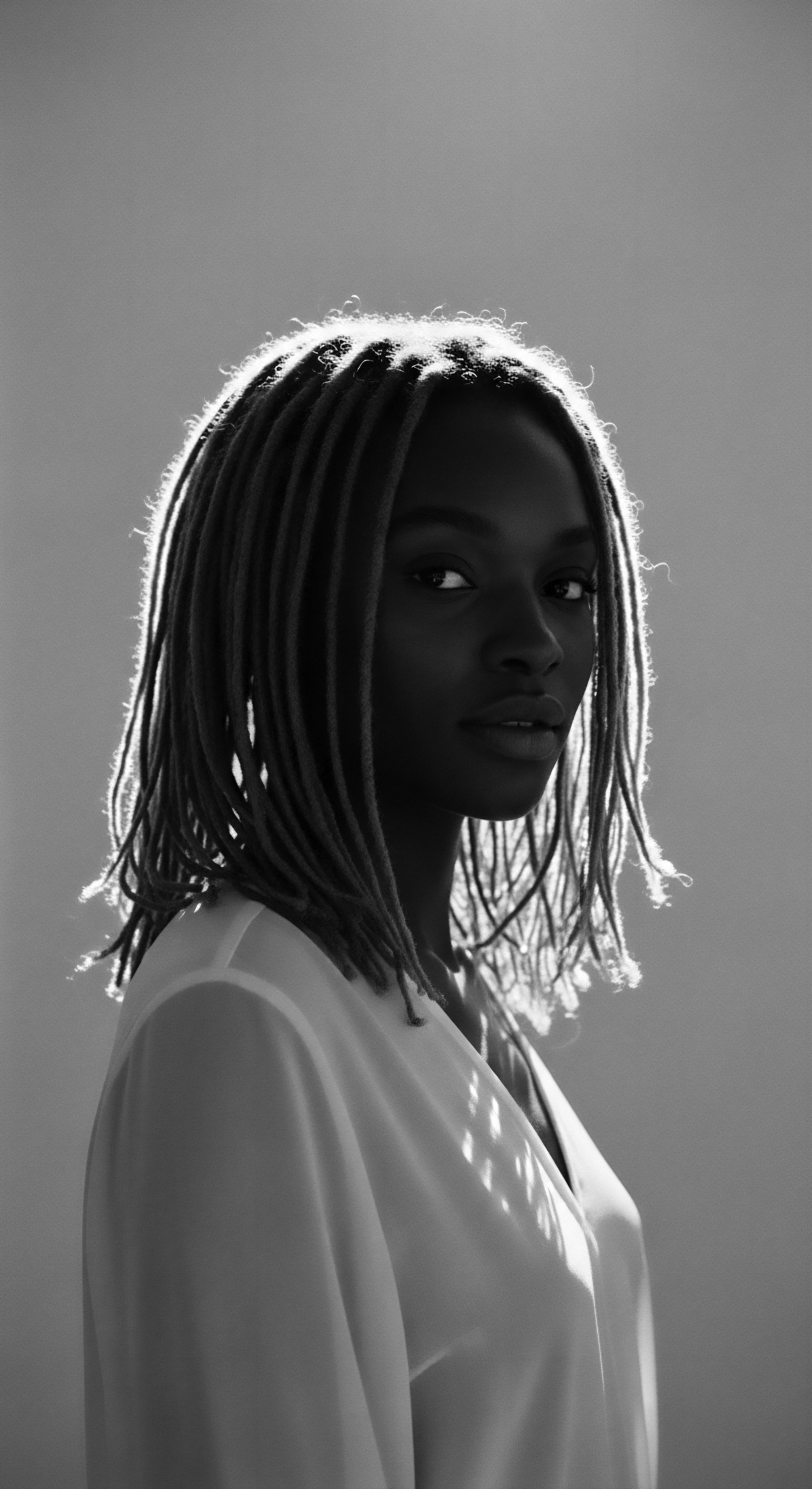
References
- Billero, V. & Miteva, M. (2018). Traction alopecia ❉ the root of the problem. Clinical, Cosmetic and Investigational Dermatology, 11, 149-159.
- Byrd, A. D. & Tharps, L. L. (2014). Hair Story ❉ Untangling the Roots of Black Hair in America. St. Martin’s Press.
- Callender, V. D. (2004). Medical and surgical therapies for alopecias in black women. Dermatologic Therapy, 17(2), 164-171.
- Dabiri, E. (2019). Twisted ❉ The Tangled History of Black Hair Culture. Harper Perennial.
- Jacobs, L. (2012). From the Kitchen to the Parlor ❉ Language and Becoming in African American Women’s Hair Care. Oxford University Press.
- Maharaj, C. (2025). Beyond the roots ❉ exploring the link between black hair and mental health. Research blog for Mental Health Awareness Week 2025.
- Nchinech, N. Bouich, S. El Amri, Y. & Elachouri, M. (2023). Plants Use in the Care and Management of Afro-Textured Hair ❉ A Survey of 100 Participants. Scholars Journal of Applied Medical Sciences, 11(11), 1984-1988.
- Okoro, N. M. (2023). The Genomic Variation in Textured Hair ❉ Implications in Developing a Holistic Hair Care Routine. Cosmetics, 10(3), 85.
- Revan, D. (2024). Hair, History, and Healthcare ❉ The Significance of Black Hairstyles for Dermatologists. VisualDx Student Advisory Board Chair Medical Blog.
- Solomon, J. (2022). Why Half of African Americans Experience Hair Loss. Afro Hair Loss and Care Blog.
